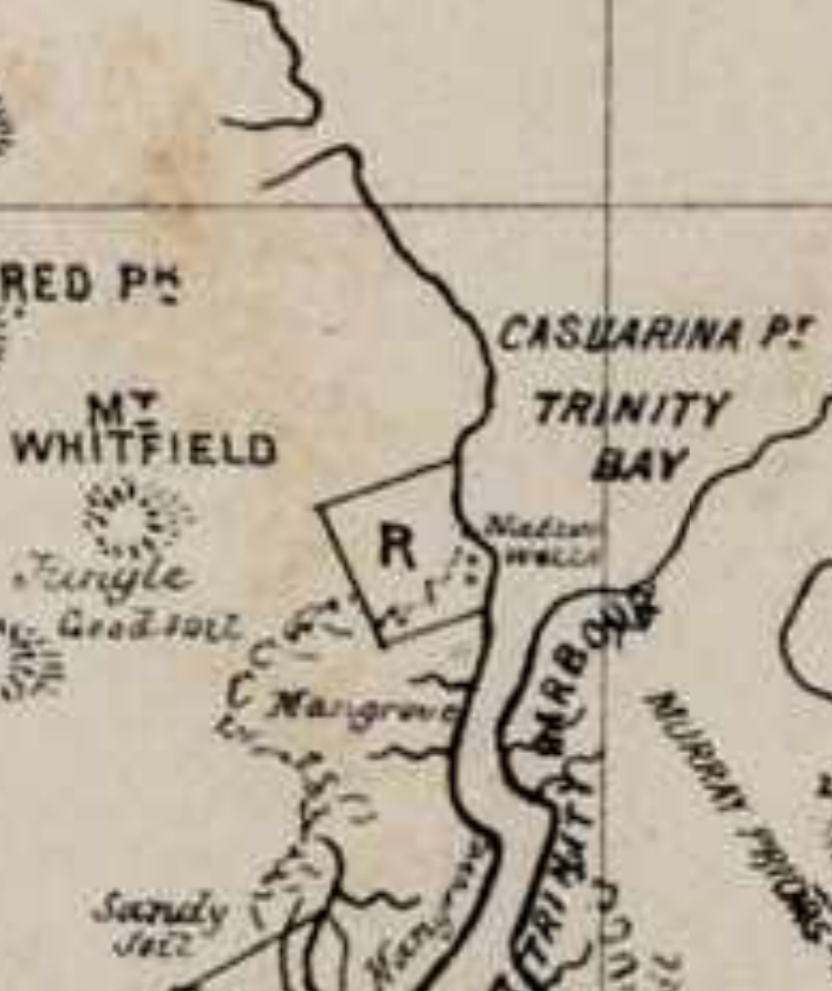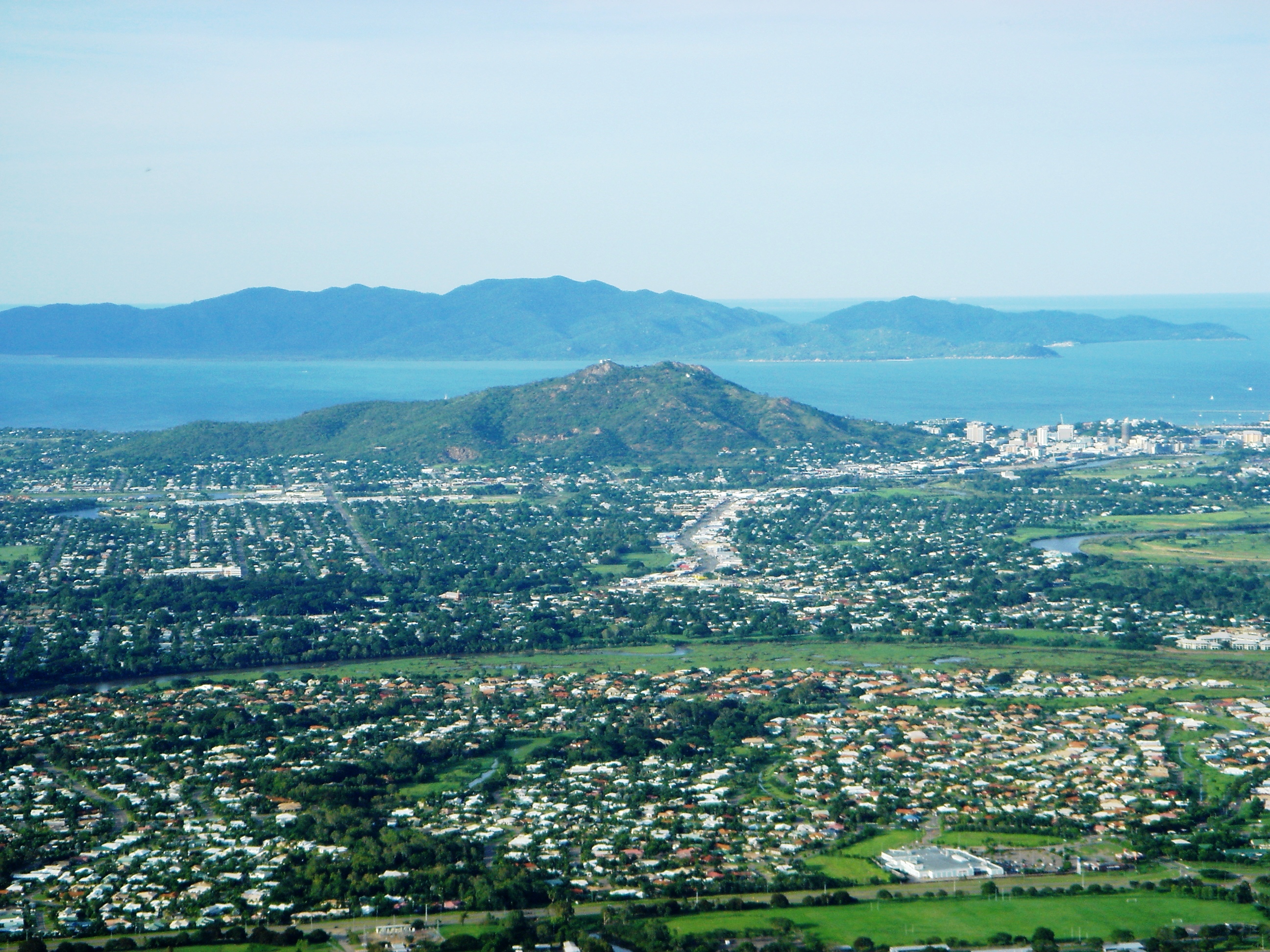|
Australian 5th Division
The 5th Division was an infantry division of the Australian Army which served during the First and Second World Wars. The division was formed in February 1916 as part of the expansion of the Australian Imperial Force infantry brigades. In addition to the existing 8th Brigade were added the new 14th and 15th Brigades, which had been raised from the battalions of the 1st and 2nd Brigades respectively. From Egypt the division was sent to France and then Belgium, where they served in the trenches along the Western Front until the end of the war in November 1918. After the war ended, the division was demobilised in 1919. The division was re-raised as a Militia formation during the Second World War, and was mobilised for the defence of North Queensland in 1942, when it was believed that the area was a prime site for an invasion by Japanese forces. Most of the division was concentrated in the Townsville area, although the 11th Brigade was detached for the defence of Cairns and ... [...More Info...] [...Related Items...] OR: [Wikipedia] [Google] [Baidu] |
Péronne, Somme
Péronne () is a commune of the Somme department in Hauts-de-France in northern France. It is close to where the 1916, first 1918 and second 1918 Battles of the Somme took place during the First World War. The Museum of the Great War (known in French as the ''Historial de la Grande Guerre'') is located in the château. Geography Péronne is situated in the old region of Santerre, home of the early French kings. It is located in the Somme valley. The autoroutes A1 and A16 pass close by. The national road, the N17, traverses the town. Demography History On a hill, dominating the Somme river and its lakes, Péronne was a well-fortified place during the early Middle Ages. The ramparts were built in the 9th century. All that remains today of the ancient fortress is the ''Porte de Bretagne''. Few towns have been as involved in the history of France, few towns so often devastated, as Péronne. Burned and pillaged in the time of the Normans; gravely damaged during the time ... [...More Info...] [...Related Items...] OR: [Wikipedia] [Google] [Baidu] |
First Australian Imperial Force
The First Australian Imperial Force (1st AIF) was the main expeditionary force of the Australian Army during the First World War. It was formed as the Australian Imperial Force (AIF) following Britain's declaration of war on Germany on 15 August 1914, with an initial strength of one infantry division and one light horse brigade. The infantry division subsequently fought at Gallipoli between April and December 1915, with a newly raised second division, as well as three light horse brigades, reinforcing the committed units. After being evacuated to Egypt, the AIF was expanded to five infantry divisions, which were committed to the fighting in France and Belgium along the Western Front in March 1916. A sixth infantry division was partially raised in 1917 in the United Kingdom, but was broken up and used as reinforcements following heavy casualties on the Western Front. Meanwhile, two mounted divisions remained in the Middle East to fight against Turkish forces in the Sinai an ... [...More Info...] [...Related Items...] OR: [Wikipedia] [Google] [Baidu] |
Cape York Peninsula
Cape York Peninsula is a large peninsula located in Far North Queensland, Australia. It is the largest unspoiled wilderness in northern Australia.Mittermeier, R.E. et al. (2002). Wilderness: Earth’s last wild places. Mexico City: Agrupación Sierra Madre, S.C. The land is mostly flat and about half of the area is used for grazing cattle. The relatively undisturbed eucalyptus-wooded savannahs, tropical rainforests and other types of habitat are now recognised and preserved for their global environmental significance. Although much of the peninsula remains pristine, with a diverse repertoire of endemic flora and fauna, some of its wildlife may be threatened by industry and overgrazing as well as introduced species and weeds.Mackey, B. G., Nix, H., & Hitchcock, P. (2001). The natural heritage significance of Cape York Peninsula. Retrieved 15 January 2008, froepa.qld.gov.au. The northernmost point of the peninsula is Cape York (). The land has been occupied by a number of A ... [...More Info...] [...Related Items...] OR: [Wikipedia] [Google] [Baidu] |
Cairns, Queensland
Cairns (, ) is a city in Queensland, Australia, on the tropical north east coast of Far North Queensland. The population in June 2019 was 153,952, having grown on average 1.02% annually over the preceding five years. The city is the 5th-most-populous in Queensland, and 15th in Australia. The city was founded in 1876 and named after Sir William Wellington Cairns, following the discovery of gold in the Hodgkinson river. Throughout the late 19th century, Cairns prospered from the settlement of Chinese immigrants who helped develop the region's agriculture. Cairns also served as a port for blackbirding ships, bringing slaves and indentured labourers to the sugar plantations of Innisfail. During World War II, the city became a staging ground for the Allied Forces in the Battle of the Coral Sea. By the late 20th century the city had become a centre of international tourism, and in the early 21st century has developed into a major metropolitan city. Cairns is a popular tourist ... [...More Info...] [...Related Items...] OR: [Wikipedia] [Google] [Baidu] |
11th Brigade (Australia)
The 11th Brigade is an Australian Army brigade which currently comprises most Australian Army Reserve units located in Queensland. The brigade was first formed in early 1912 following the introduction of the compulsory training scheme. Later, as part of the 3rd Division and saw action during World War I on the Western Front as part of the First Australian Imperial Force. In the interwar years, the brigade was re-raised with its headquarters in Brisbane. During World War II, it undertook garrison and defensive duties in north Queensland before deploying to Dutch New Guinea in 1943. In 1944–1945, the brigade took part in the fighting against the Japanese on Bougainville. In the postwar era, the 11th Brigade was raised and disbanded several times, before being raised in Townsville in 1987, where its headquarters is currently located. It forms part of the 2nd Division, and consists of units based across Queensland and New South Wales. History Formation and World War I Th ... [...More Info...] [...Related Items...] OR: [Wikipedia] [Google] [Baidu] |
Townsville
Townsville is a city on the north-eastern coast of Queensland, Australia. With a population of 180,820 as of June 2018, it is the largest settlement in North Queensland; it is unofficially considered its capital. Estimated resident population, 30 June 2018. Townsville hosts a significant number of governmental, community and major business administrative offices for the northern half of the state. Part of the larger local government area of the City of Townsville, it is in the dry tropics region of Queensland, adjacent to the central section of the Great Barrier Reef. The city is also a major industrial centre, home to one of the world's largest zinc refineries, a nickel refinery and many other similar activities. As of December 2020, $30M operations to expand the Port of Townsville are underway, which involve channel widening and installation of a 70-tonne Liebherr Super Post Panamax Ship-to-Shore crane, to allow much larger cargo and passenger ships to utilise the port. It is a ... [...More Info...] [...Related Items...] OR: [Wikipedia] [Google] [Baidu] |
Empire Of Japan
The also known as the Japanese Empire or Imperial Japan, was a historical nation-state and great power that existed from the Meiji Restoration in 1868 until the enactment of the post-World War II 1947 constitution and subsequent formation of modern Japan. It encompassed the Japanese archipelago and several colonies, protectorates, mandates, and other territories. Under the slogans of and following the Boshin War and restoration of power to the Emperor from the Shogun, Japan underwent a period of industrialization and militarization, the Meiji Restoration, which is often regarded as the fastest modernisation of any country to date. All of these aspects contributed to Japan's emergence as a great power and the establishment of a colonial empire following the First Sino-Japanese War, the Boxer Rebellion, the Russo-Japanese War, and World War I. Economic and political turmoil in the 1920s, including the Great Depression, led to the rise of militarism, nat ... [...More Info...] [...Related Items...] OR: [Wikipedia] [Google] [Baidu] |
North Queensland
North Queensland or the Northern Region is the northern part of the Australian state of Queensland that lies just south of Far North Queensland. Queensland is a massive state, larger than many countries, and its tropical northern part has been historically remote and undeveloped, resulting in a distinctive regional character and identity. Townsville is the largest urban centre in North Queensland, leading it to be regarded as an unofficial capital. The region has a population of 231,628 and covers . Geography There is no official boundary that separates North Queensland from the rest of the state. Unofficially it is usually considered to have a southern border beginning south of the Mackay Region southern boundary, but historically it has been as far south as Rockhampton. To the north is the Far North Queensland region, centred on Cairns and out west is the Gulf Country. A coastal region centred on its largest settlement is the city of Townsville. The city is the locat ... [...More Info...] [...Related Items...] OR: [Wikipedia] [Google] [Baidu] |
Australian Army Reserve
The Australian Army Reserve is a collective name given to the reserve units of the Australian Army. Since the Federation of Australia in 1901, the reserve military force has been known by many names, including the Citizens Forces, the Citizen Military Forces, the Militia and, unofficially, the Australian Military Forces. In 1980, however, the current name—Australian Army Reserve—was officially adopted, and it now consists of a number of components based around the level of commitment and training obligation that its members are required to meet. Overview For the first half of the 20th century, due to a widespread distrust of permanent military forces in Australia, the reserve military forces were the primary focus of Australian military planning.Grey 2008, pp. 66–83. Following the end of World War II, however, this focus gradually shifted due to the changing strategic environment, and the requirement for a higher readiness force available to support collective security go ... [...More Info...] [...Related Items...] OR: [Wikipedia] [Google] [Baidu] |
Egypt
Egypt ( ar, مصر , ), officially the Arab Republic of Egypt, is a transcontinental country spanning the northeast corner of Africa and southwest corner of Asia via a land bridge formed by the Sinai Peninsula. It is bordered by the Mediterranean Sea to the north, the Gaza Strip of Palestine and Israel to the northeast, the Red Sea to the east, Sudan to the south, and Libya to the west. The Gulf of Aqaba in the northeast separates Egypt from Jordan and Saudi Arabia. Cairo is the capital and largest city of Egypt, while Alexandria, the second-largest city, is an important industrial and tourist hub at the Mediterranean coast. At approximately 100 million inhabitants, Egypt is the 14th-most populated country in the world. Egypt has one of the longest histories of any country, tracing its heritage along the Nile Delta back to the 6th–4th millennia BCE. Considered a cradle of civilisation, Ancient Egypt saw some of the earliest developments of writing, agr ... [...More Info...] [...Related Items...] OR: [Wikipedia] [Google] [Baidu] |
2nd Brigade (Australia)
The 2nd Brigade was a brigade-sized infantry unit of the Australian Army. Formed in 1903 as a militia formation based in Victoria, the brigade later served during the First World War as part of the Australian Imperial Force, allocated to the 1st Division. During the war, the 2nd Brigade took part in the fighting at Gallipoli, including the Battle of Krithia where it lost almost a third of its strength. Later they took part in the Battle of Lone Pine before being withdrawn back to Egypt in December 1915. Following this the brigade was transferred to the Western Front in France and Belgium where, between March 1916 and the armistice in November 1918, they took part in most of the major Allied operations. In the 1920s the brigade reverted to a part-time militia formation, once again based in Victoria, forming part of the 4th Division. During the Second World War, the brigade remained a part of 4th Division until 1943, when it was reallocated to the 2nd Division based in West ... [...More Info...] [...Related Items...] OR: [Wikipedia] [Google] [Baidu] |
1st Brigade (Australia)
1st Brigade is a combined arms formation of the Australian Army. Formed in 1903 as a militia formation based in New South Wales, it was reconstituted as part of the Australian Imperial Force in 1914 for service during World War I, the brigade fought at Gallipoli and on the Western Front before being disbanded in mid-1919. In 1921, the 1st Brigade was re-raised as a unit of Australia's part-time military forces, based in New South Wales. During World War II the brigade undertook defensive duties before being disbanded. In 1948, it was re-raised as an integral part of the Australian Regular Army. Currently the brigade is based at Robertson Barracks in Darwin and at RAAF Base Edinburgh near Adelaide, South Australia. It is the first of the Australian Army brigades to be re-organised as a combat brigade under Plan Beersheba. History Formation Originally formed in 1903 as a Militia unit of the Commonwealth Military Forces, it was established in New South Wales and consisted of fou ... [...More Info...] [...Related Items...] OR: [Wikipedia] [Google] [Baidu] |









